 The state of Oaxaca has many folk art traditions, many centered in the small pueblos (villages) outside the city. Learning about local folk art is a great way to learn a little bit about local communities so this week I visited a few of them. Each village I visited seemed passionate about its art and happy to have visitors.
The state of Oaxaca has many folk art traditions, many centered in the small pueblos (villages) outside the city. Learning about local folk art is a great way to learn a little bit about local communities so this week I visited a few of them. Each village I visited seemed passionate about its art and happy to have visitors.
Santa Maria Aztompa.
 My first adventure was to Atzompa, which runs up and down a small hillside overlooking a valley of farms and ranches just north of Oaxaca city. Its residents are poor and 90% of the local economy relies on pottery production.
My first adventure was to Atzompa, which runs up and down a small hillside overlooking a valley of farms and ranches just north of Oaxaca city. Its residents are poor and 90% of the local economy relies on pottery production.
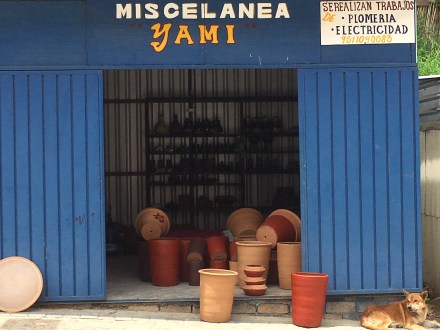
 The pueblo’s best known “orbre” is a rich, dark green earthenware. Atzompa exported a lot of its pottery to the US until the US restricted the sale and use of ceramics containing lead because of its serious health effects. Atzompa’s green pottery contained lead and so sales to the US plummeted.
The pueblo’s best known “orbre” is a rich, dark green earthenware. Atzompa exported a lot of its pottery to the US until the US restricted the sale and use of ceramics containing lead because of its serious health effects. Atzompa’s green pottery contained lead and so sales to the US plummeted. 
Determined to survive, ceramicist Ana Maria Alarzon at Taller Coatlicue switched techniques. She and her team of artisans began firing their pottery without the green glaze, instead using ash and other natural materials to get a very rustic finish, and then burnishing each piece by hand. Alarzon’s ceramics have become wildly popular with high-end restaurants and her studio is busy all the time. Her prices surely keep demand high but to find out what they are, you gotta go there yourself.
After I left Ana Maria’s Taller Coatlicue, I walked through town. Like Oaxaca City, Aztompa wears its politics on its sleeve and has adorned the calles with wonderful murals. 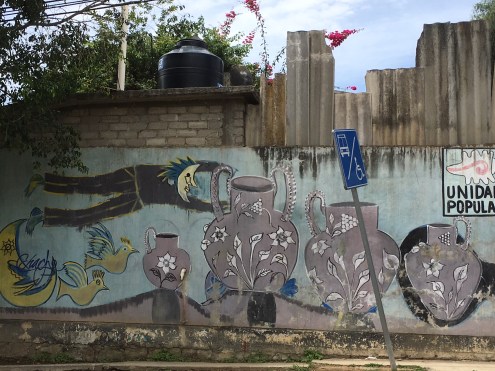
Unlike Oaxaca City, Aztompa is rural and agricultural.
San Martin Tilcajete.
Tilcajete is about 20 miles south of Oaxaca, surrounded by cornfields and coastal hills. About 20 years ago, Tilcajete put Oaxaca on the map with its brightly-painted wooden animals called “alebrijes,” which are popular in many US gift shops and featured in every souvenir tienda in Oaxaca City. Tilcajete is poor but better off than most similar villages because of the income from the carvings and the modest tourism they have attracted.
Tilcajete does not wear its politics on its sleeve as Aztompa does. Instead the tiendas and public spaces celebrate their wooden heros.
And sometimes local toros….
San Bartolo Coyotepec.
I spent a short time in the village of Coyotepec, which sells burnished black pottery. Much of the pottery at the main market is unfortunately mass produced and I didn’t have time to find the pueblo’s version of Ana Maria Alarzon. 
But I did find one artisan who had a few special pieces.
Teotitlan del Valle
Teotitlan is famous for rug-making and the natural dyes the weavers use that are made from local plants, like chamomile, indigo and marigolds. A really long time ago, I spun yarn, dyed it, and make a few rugs myself, so I was especially eager to visit Teotitlan.
My taxi driver, Jose Luis, was very familiar with the community and suggested I visit the studio of Pantaleon Ruiz, who is a painter as well as a weaver and sculptor. His work is well known in Oaxaca state and he has shown of his paintings in the US and Europe.

I loved Pantaleon Ruiz’s “obres,” this one uses rug dyes to depict a Mexican mask, an important theme in his work.
At the market, I bought a small rug from Rosalinda Ruiz, who does all of her own dying, spinning and weaving.
Tlacolula de Matamoros
 Tlacolula is not really an artisan village. But it’s a good place to find folk art because every Sunday it hosts the mother of all mercados, where farmers, vendors and folk artists of all kinds sell their products. Families visit the market to eat at the stalls, and buy almost anything that is small enough to fit in the back of a truck. I saw some good folk art but mostly I had a lot of fun walking around.
Tlacolula is not really an artisan village. But it’s a good place to find folk art because every Sunday it hosts the mother of all mercados, where farmers, vendors and folk artists of all kinds sell their products. Families visit the market to eat at the stalls, and buy almost anything that is small enough to fit in the back of a truck. I saw some good folk art but mostly I had a lot of fun walking around.

My breakfast at the market, called a “huarache” (shoe) — this one had layers of black beans, cheese, avocado and salsa. Delicious!
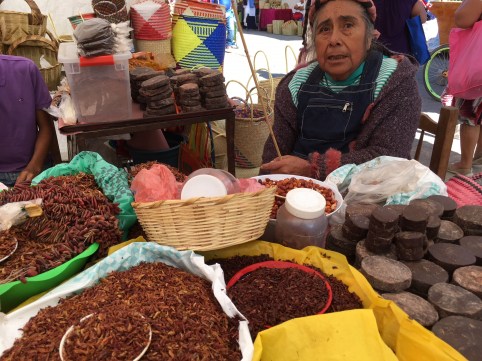
A few of the many varieties of chipulines in Oaxaca. Some with chile, some with lemon, some with salt only. Chipulines are grasshoppers.
And now I have to figure out how to fit it all into my 22″ suitcase….
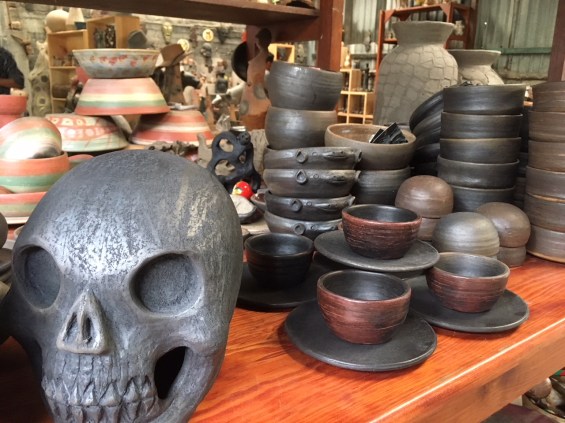


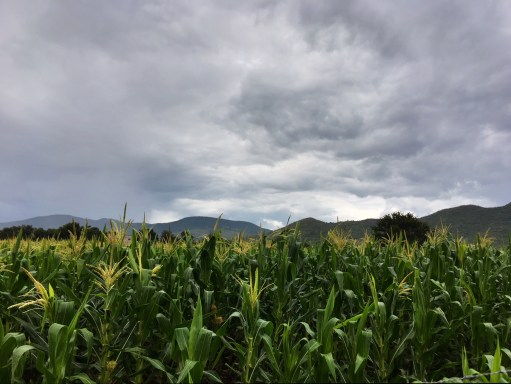


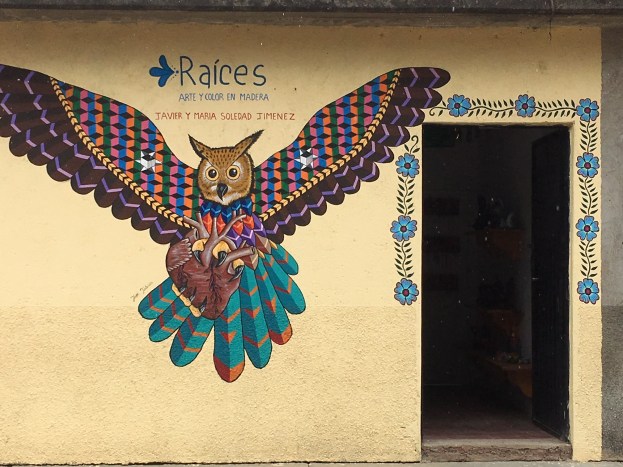
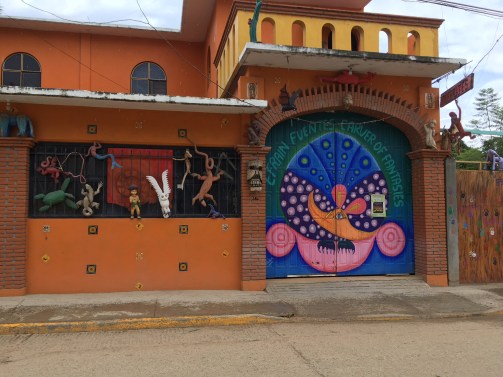


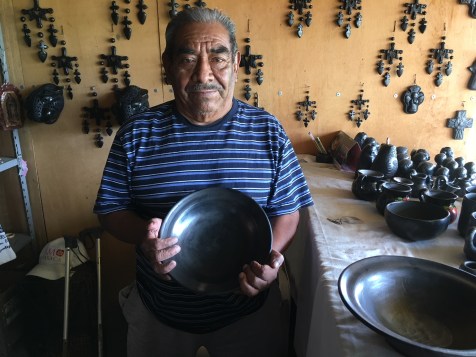

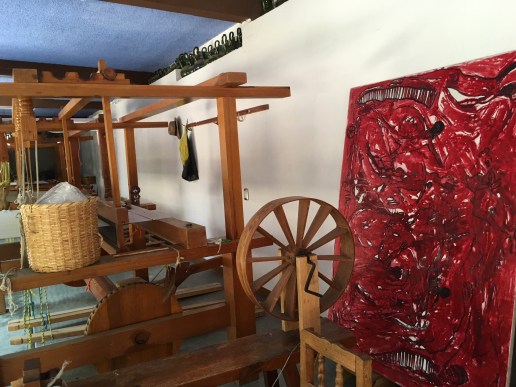

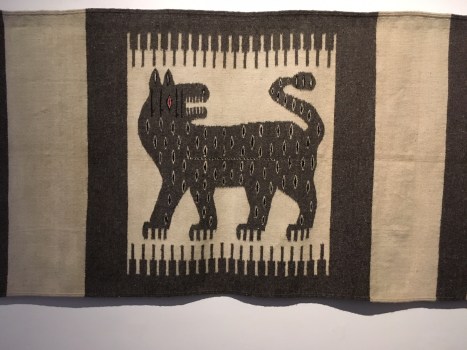
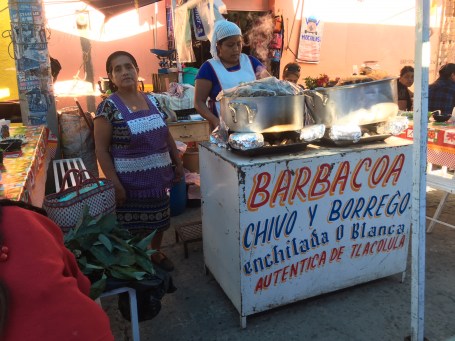
Love this. Oxaca is one of my favorite places. And I visited these artisan communities. Plus, mezcal! Thanks for the memories.
Thank you Jan!
The pictures are lovely and I am glad I am not in Tilcajete because you know I can resist neither alebrijes nor bargains. I would have had to tote a steamer trunk around to load up those wonderfully creative depictions of magical beasts!
Yes I think you would! You know how much stuff I have bought in the past three years of travel — not enough to fill a small suitcase. But here, I had to buy another suit case!
Aaaah! I wish I could have stayed long enough to see those villages. But your telling of your adventure is so beautiful and well done I gladly settle for that. Xxoo
We will have to go to Chiapas!
great photos…I posted your link on reddit, so you will see a boost in traffic. Can’t post your own links there…
Thanks so much Beth!
How did I miss this? It looks like you’re having wonderful adventures!
Or ‘had’ now that I look at the published date. I’ve never experienced Oaxaca but would love to!
I love Oaxaca and I love Mexico — in San Miguel de Allende for a few months.